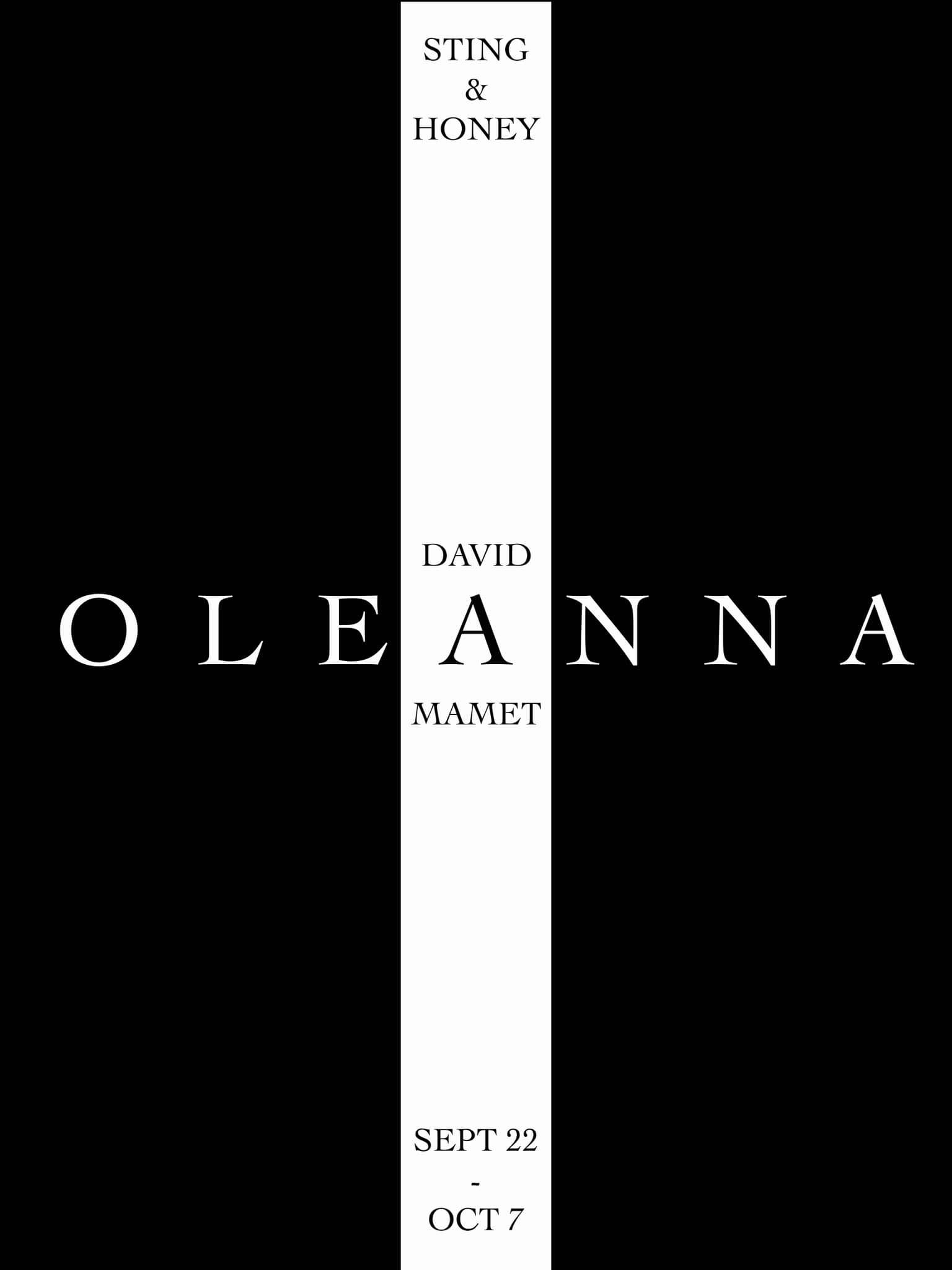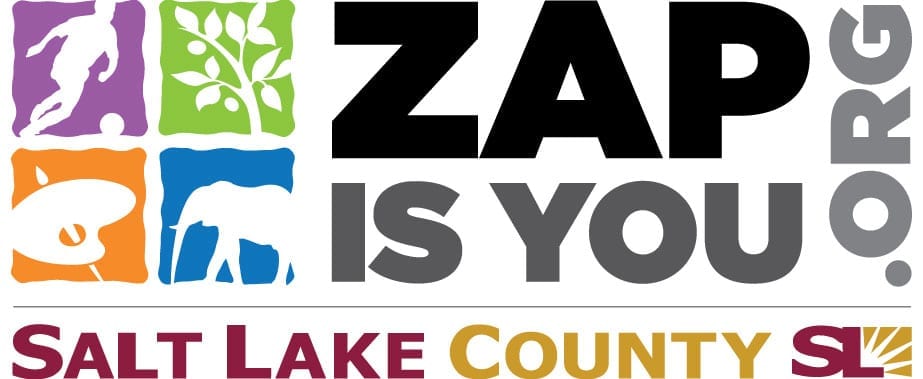SALT LAKE CITY — Sting and Honey’s production of Oleanna, by Pulitzer Prize-winning playwright David Mamet, is as relevant and provocative today as it was when it debuted 30 years ago. The play explores themes of communication and miscommunication, gender dynamics, sexual harassment, privilege, and power through the relationship between a male college professor and a female student. Oleanna derives its name from a Norwegian folk song describing a failed masculine-centric utopian city called Oleanna, where the city’s resources are abundant and self-sustaining, and the men who occupy it are served happily by their women (or if they are unhappy about their role, they promptly beat themselves, thus removing even this obligation from their men). The play’s name is never referenced within the script, however, leaving the viewer to consider the several ways in which it might apply.

Oleanna begins with John, the professor, trying to help his frustrated student, Carol, through well-intentioned, if sometimes sexist, ways. Simultaneously, he must also navigate important events in his personal life through the regular interruption of the telephone. John is entirely oblivious to his own privilege, self-importance, and the dominant position of power he holds over Carol. By the second act, it is clear that Carol is not oblivious to this, and — despite John’s professed benign and magnanimous intentions in their prior interchange — it becomes clear that Carol understood the encounter very differently, setting up a compelling power struggle that culminates in the final act.
Javen Tanner both directs the production and plays the role of John. Tanner’s director’s note is just a short quote from a writer and Soviet dissident, Aleksander Solzhenitsyn about the existence of both evil and good in everyone, setting the audience up for the internal and external character struggle they are about to experience. There are surprisingly few stage directions provided by the playwright in the text. The setting simply states that when the play begins, John is on the phone, and Carol is seated across the desk from him. In Sting and Honey’s production, that desk becomes a character of its own. The desk is an excessively long, stark, white table abutted at the upstage end by two white chairs, contrasted by the surrounding black stage and curtains. Prior to the show and during scene changes, the table is lit with an alternating pattern of light and shadow which echoes this duality of good and evil, and reminds the audience that in reality, nothing is completely black and white.
In act one, the desk is angled and positioned at a severe thrust that seems to penetrate into the audience’s space in a manner that pulls the audience into the world of the play. The position of the desk and chairs emphasizes the play’s initial imbalance of power, with the desk cutting the playing space into a dominating larger section that includes the professor’s chair set at a height that towers over the lower-set chair in the smaller space across from it. As the play progresses and the power dynamic shifts, the table’s position also shifts to reinforce the new dynamic in each act. This simple stage convention, together with Tanner’s compelling staging is highly effective at communicating the shift in power from John to Carol.
Mamet creates dual protagonists and antagonists in the characters of John and Carol. Suni Gigliotti’s portrayal of Carol is convincing, providing a strong balance to her counterpart to Tanner’s performance as John. Carol develops over the three acts, as she progresses from diffidence to tenacity to aggression. However, Tanner’s directing choice to have Carol break down into hysterical crying at more than one point in the production seems to undermine that character arc. This is particularly troublesome at the end of the production, where Carol’s submissive reaction after the confrontational climax skews the power dynamic to remove some of the playwright’s intentional ambiguity of which character is in the right during their confrontation. Textually, both characters are stating facts throughout the play. It is the intent, meaning, interpretation and absolute breakdown in communication (facilitated by Mamet’s classic style of clipped dialogue) that creates the nearly unbearable tension throughout the tight 90-minute production and leaves the audience mulling it over for days.
Tanner gives a solid performance as John. Although Tanner’s comic talents in prior productions, like Beckett’s Waiting for Godot, is stellar, there is no comedy for him to fall back on in Oleanna. As such, he is forced to lean into his abundant dramatic training to fulfill his character’s arc, which he does well. Given that Tanner appears in every scene in the play, it is safe to assume that assistant director Bijan Hosseini contributed greatly to the production’s staging, which was solid. Although the fight scene felt like it could use a bit more practice to clean it up, generally the stage direction was clean, clear, intentional and effective.
Nevertheless, Tanner’s choice to undertake directing himself in Oleanna sets up a power dynamic similar to that within the production. Just as his character’s inability to step back and see his own privilege and the imbalance of power inherent in his position, Tanner acting as both actor and director potentially limited his ability to direct the production with an even and balanced hand. I cannot help but wish the company had taken Oleanna as opportunity to bring in a female director to provide additional perspective to this particular production and to give Tanner the opportunity to pour his talent fully into the role of John. Although Tanner is clearly a multi-talented artist, as Sting and Honey has grown and now has a permanent home at Regent Street, it would benefit from bringing in other directors, to infuse and enrich the company. Given the themes of power and gender in this production, not inviting a talented woman to direct Oleanna is a missed opportunity.
Still, Sting and Honey’s Oleanna is well worth its audience’s time. It is a superb production that will hopefully encourage self-examination and tough thinking for some time afterwards. In an era of heightened political and social rhetoric surrounding gender and power, and in a climate rife with misunderstanding and a growing inability to communicate effectively, Oleanna is a reminder that words matter, actions matter, and perception matters. In the words of Mamet through his protagonist John, communication is at its essence an agreement between two parties where “in effect, we agree that we are both human.”
[box]The Sting & Honey Company production of Oleanna plays Thursdays through Saturdays at 7:30 PM and Saturdays at 2 PM through October 7 at the Regent Street Black Box in the Eccles Theater (144 Regent Street, Salt Lake City). Tickets are $15-20. For more information, visit stingandhoney.org.[/box]

